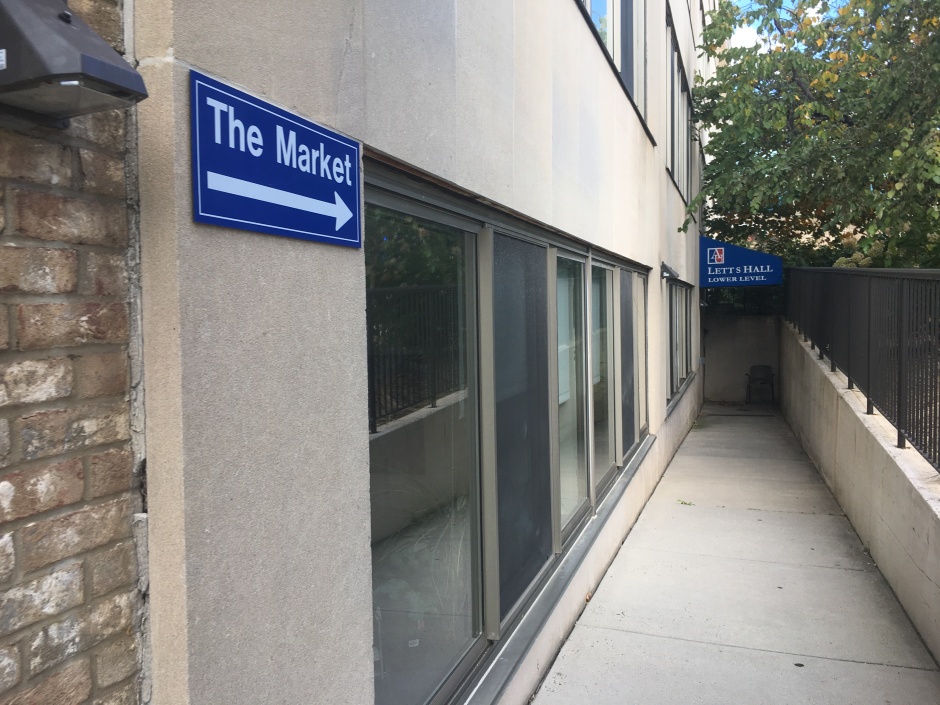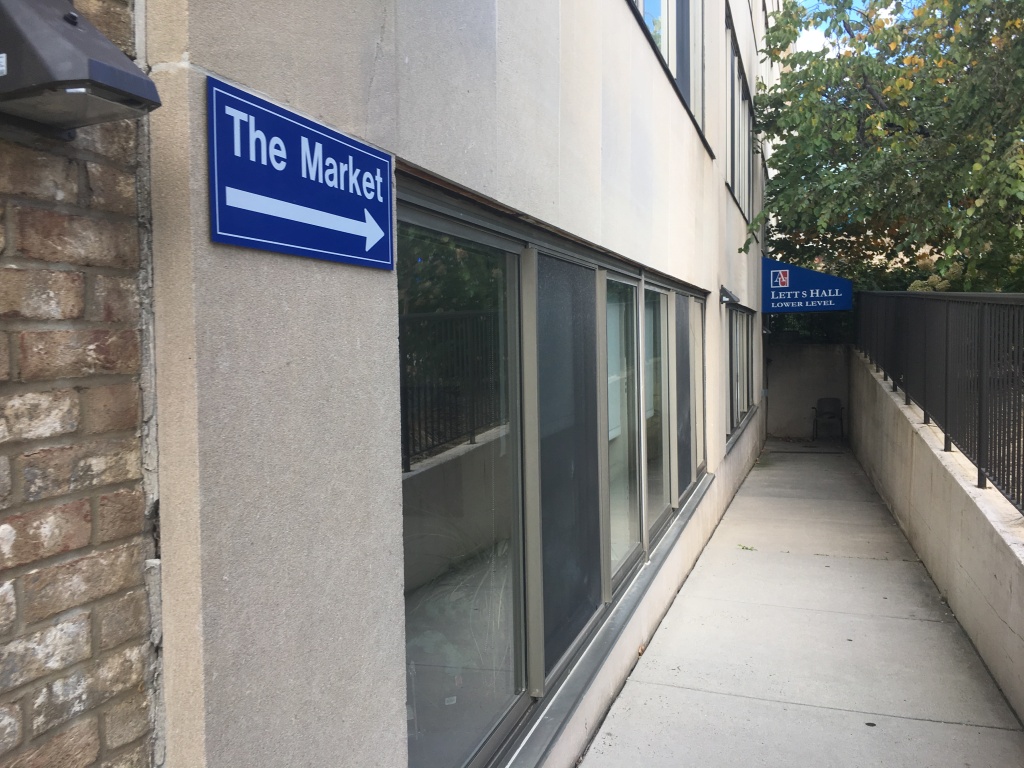
By Jennifer Croney
Tony Hollinger works in a small basement room, locked by a student ID scanner and nestled beneath the Letts residential hall. Inside, there are metal shelves stacked with boxes of macaroni and canned goods. A sign-out sheet and thank-you notes sit on a table by the door.
What was once an old conference room is now The Market, an on-campus food pantry for students in need. Hollinger is the Director of Student Engagement and Diversity Initiatives in American University’s Office of Campus Life and oversees the pantry’s operation.
“Folks are able to come in and grab what they need when they need it,” Hollinger said.
Hollinger and his colleagues at The Market are only a few of those who are working to address hunger and food insecurity on college campuses. The Market is one of over 200 on-campus college food pantries operating across the United States, according to the College and University Food Bank Alliance.
Over 12 percent of U.S. households were food insecure in 2016, according to the United States Department of Agriculture. The USDA Economic Research Service’s website defines a food insecure household as being “uncertain of having or unable to acquire, enough food to meet the needs of all their members”.
The “broke college student” is a popular stereotype, but to those who are suffering from food insecurity, it has become a harsh reality. Food insecurity is a growing problem on university campuses across the country, and American University is no exception.
The issue of food insecurity on-campus specifically has garnered more attention in recent years. The National Student Campaign Against Hunger and Homelessness’s 2016 study, Hunger on Campus, found that 48 percent of college students had experienced food insecurity in the month previous to the survey.
When students alerted American University’s administration to their inability to get the food that they needed, former Assistant Vice President of Campus Life Fanta Aw worked with them to determine the best course of action, Hollinger said.
American University decided to carry out their own survey in Dec. 2016 and the results echoed The Hunger on Campus study. The university found that 44 percent of students who participated in the survey had experienced food insecurity at least once, according to The Market’s website.
American University’s findings are consistent with the Hunger on Campus study, which found that 20 percent of students at four-year institutions report low levels of food security. American University’s own survey found that 18 percent of students polled in Dec. reported having an inadequate food supply three to four times that semester.
Plans for the student-run pantry were already well underway when Hollinger began his new role as the Director of Student Engagement and Diversity Initiatives, just six months ago.
It was his job to “bring it to life,” he said.
The Market’s organizers took note from George Washington University’s on-campus food pantry, The Store, which opened its doors in late 2016. One of their shared practices is its design to protect the identity of the students utilizing it.
Food insecurity is a sensitive topic, made only more so by the pressures that university students are subject to. It’s an issue of vulnerability that creates a stigma, according to Hollinger. In an effort to ease that stigma, The Market operates in a way that prioritizes anonymity.

The Market asks students to use the room one at a time in order to maintain their privacy. Then they should anonymously record the food that they take, for pantry records and future food item requests, according to Hollinger.
“The institution and a lot of students on campus don’t want there to be a stigma for anyone who has to come and use [the pantry],” Hollinger said.
The Market asks students who are experiencing food insecurity to apply for access to the pantry via a Google Form, available on The Market’s website. The survey asks for their university email address and student ID. After two business days, security gives students access to the pantry using their student ID card.
The Market is in Lower Level Room 2 of Letts Hall, through an entrance behind the building. The pantry is open every day from 6 a.m. to noon, and from 2 p.m. to 2 a.m.
The Market receives the bulk of their food from the Capital Area Food Bank, Hollinger said. The Market is a part of a pantry partnership program run by the food bank, which provides participating pantries with food donations.
Since The Market opened its doors to students in September, it has seen a slow increase in interest, and they are working on broadening their selection in the future.
“It’s hard to call something good news when you’re dealing with an issue like food insecurity,” Hollinger said.

You must be logged in to post a comment.